What started as a promising season for Ajax under Alfred Schreuder ended in a very disappointing one under John Heitinga.
While initial form picked up under the former Ajax and Everton defender, they eventually fell off the pace once again, with the Dutch side finishing with no trophies and a disappointing third-placed finish.
As a result, Heitinga was not given the job on a permanent basis, with the record Eredivisie champions turning to Sparta Rotterdam boss Maurice Steijn.
Last season, the 49-year-old Dutchman worked wonders with Sparta Rotterdam. The club finished in sixth place and just missed out on European football after losing the Eredivisie playoff to FC Twente over two legs.
This was not a position that many expected the Rotterdam side to be in come the end of the season, with their 14th-placed finish in the 2021/22 season leaving many fans wondering if they would instead be fighting relegation this season.
Now, Steijn gets his chance with the
Amsterdam side. This tactical analysis and scout report examine some of the Dutchman’s tactics and takea peek at what Ajax fans should expect next season from their new head coach.
Maurice Steijn Style Of Play & Preferred Formation
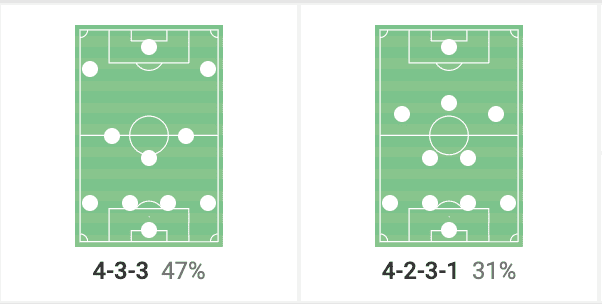
The graphic above shows the two formations that Steijn primarily used with Sparta Rotterdam last season.
As we can see, he preferred to use a 4-3-3, a formation that is rather common in Dutch football.
However, he also used a 4-2-3-1 a lot, which allowed his side to control the midfield more, especially against tougher Eredivisie opposition.
Under Steijn, Sparta did not look to hold the majority of possession and boss the play, with an average of 47.2% possession ranking in the bottom half of the Eredivisie last season.
This low rate of possession however could be mostly down to the lack of talent that Steijn had at his disposal, with this number likely increasing greatly at Ajax next season.
Sparta were around the middle of the table or lower in most attacking stats last season, but where Steijn’s side were able to really shine was on the defensive side of the ball.
Sparta conceded 41 goals last season, only three more than Ajax, which gave them the 6th fewest goals conceded in the Eredivisie.
This rather low total of goals conceded is also without taking into consideration that Sparta’s defence faced the most shots this season, with 568.
Steijn’s side also blocked the most shots, had the highest number of defensive duels and aerial duels and also had the most interceptions in the Eredivisie as well.
While Maurice Steijn will be expected to play free-flowing attacking football at Ajax, this is not something he has done at his recent managerial stops in the Eredivisie, with the Dutchman opting for more pragmatic tactics.
The bosses at Ajax will be hoping the Dutchman will be able to fix a defence that leaked too many goals for the Amsterdam giant’s standards last season.
Looking to play direct before shifting play wide
While Steijn will be able to play more possession-based, attack-minded football with Ajax, during his time with Sparta Rotterdam, the Dutchman had to opt for a more direct attacking style of play.
Most attacking moves started with the goalkeeper sending the ball long towards midfield, with the Sparta attackers looking to win the first and second balls to retain possession.
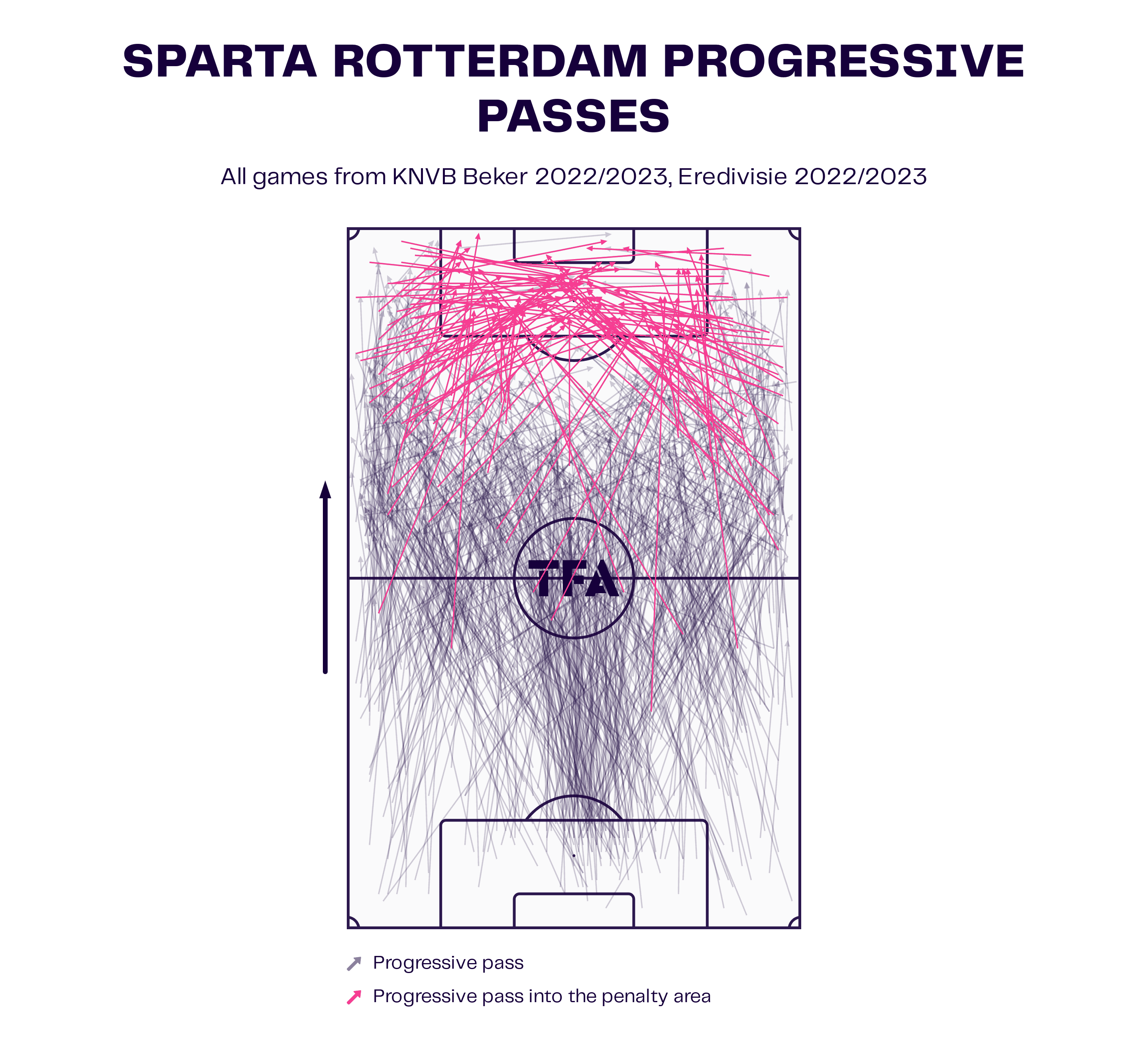
This data viz graphic above shows the total amount of progressive passes from Sparta Rotterdam this past season in all competitions.
We can see the heavy concentration of progressive passes originating centrally from Nick Olij, Sparta’s starting goalkeeper, sent into the central areas of the pitch around midfield.
Further into the attacking third, we can see the relatively empty white space in the central area just outside the penalty area, with Steijn’s side looking to shift the attacking player to the wide channels once in the attacking third.
Sparta Rotterdam looked to create overloads in these areas, usually from the overlapping fullbacks supporting the wingers or wide midfielders tucking inside.
It was also common to see the Sparta striker, usually Tobias Lauritsen, making a diagonal run into the wide channel behind the opposition’s fullback to help create the overload.
As the graphic shows in pink, the majority of Sparta’s progressive passes into the penalty area came from the wide spaces, highlighting how often they looked to shift the play wide during attacking phases of play.
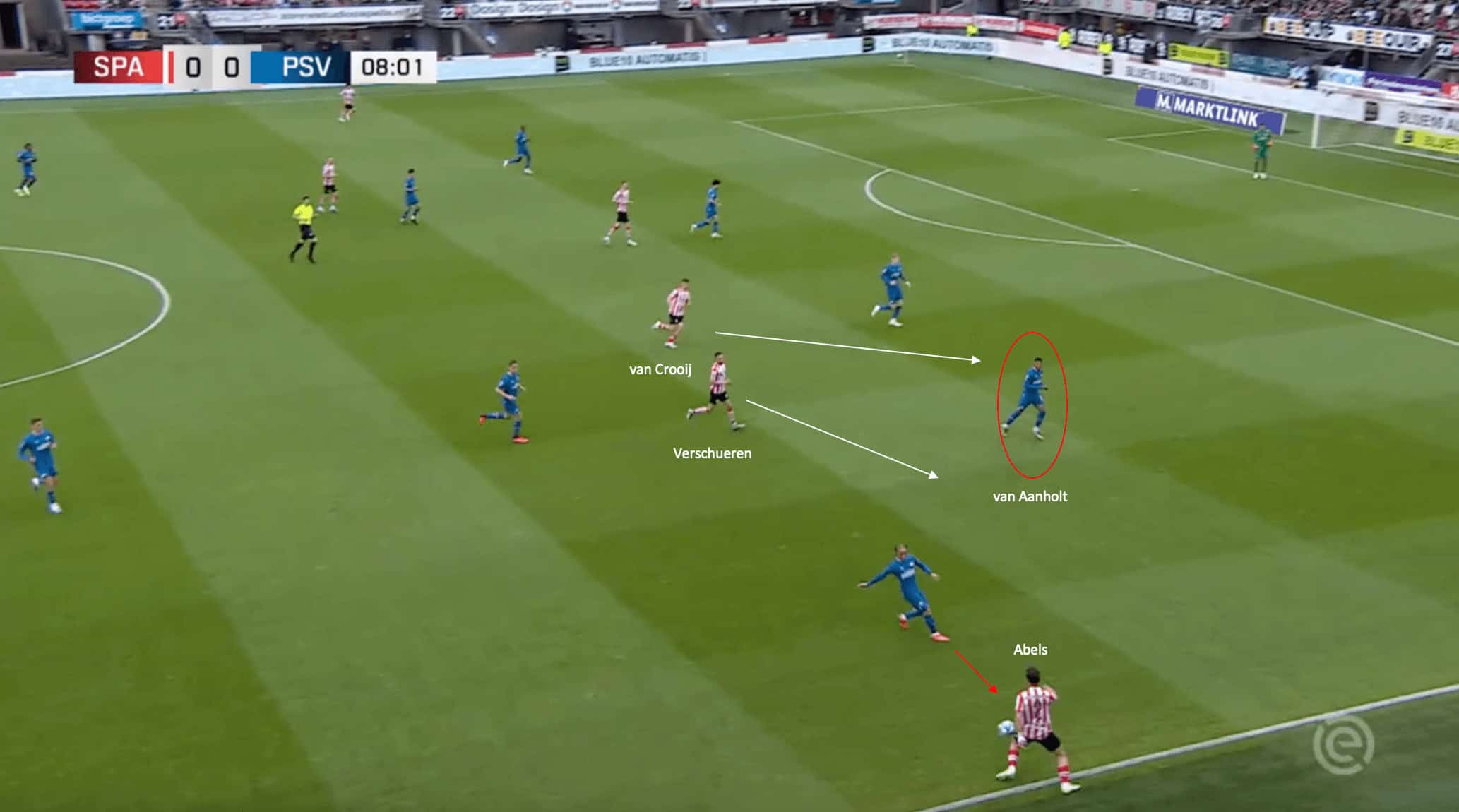
The image above shows an example of an attacking move from Sparta Rotterdam from an Eredivisie match against PSV.
In the phase of play above, the ball is in possession of the Sparta right-back Dirk Abels.
The Dutchman is put under pressure by Xavi Simons of PSV, with the midfielder looking to win back possession.
With Simons stepping out to engage, this leaves PSV fullback Patrick van Aanholt isolated against the two Sparta players making diagonal runs wide to create an overload, Arno Verschueren and Vito van Crooij.
Unfortunately, due to the close proximity of the former PSG player, Abels is forced to play the ball backwards, unable to take advantage of the overload being created by the runs into the wide channel.
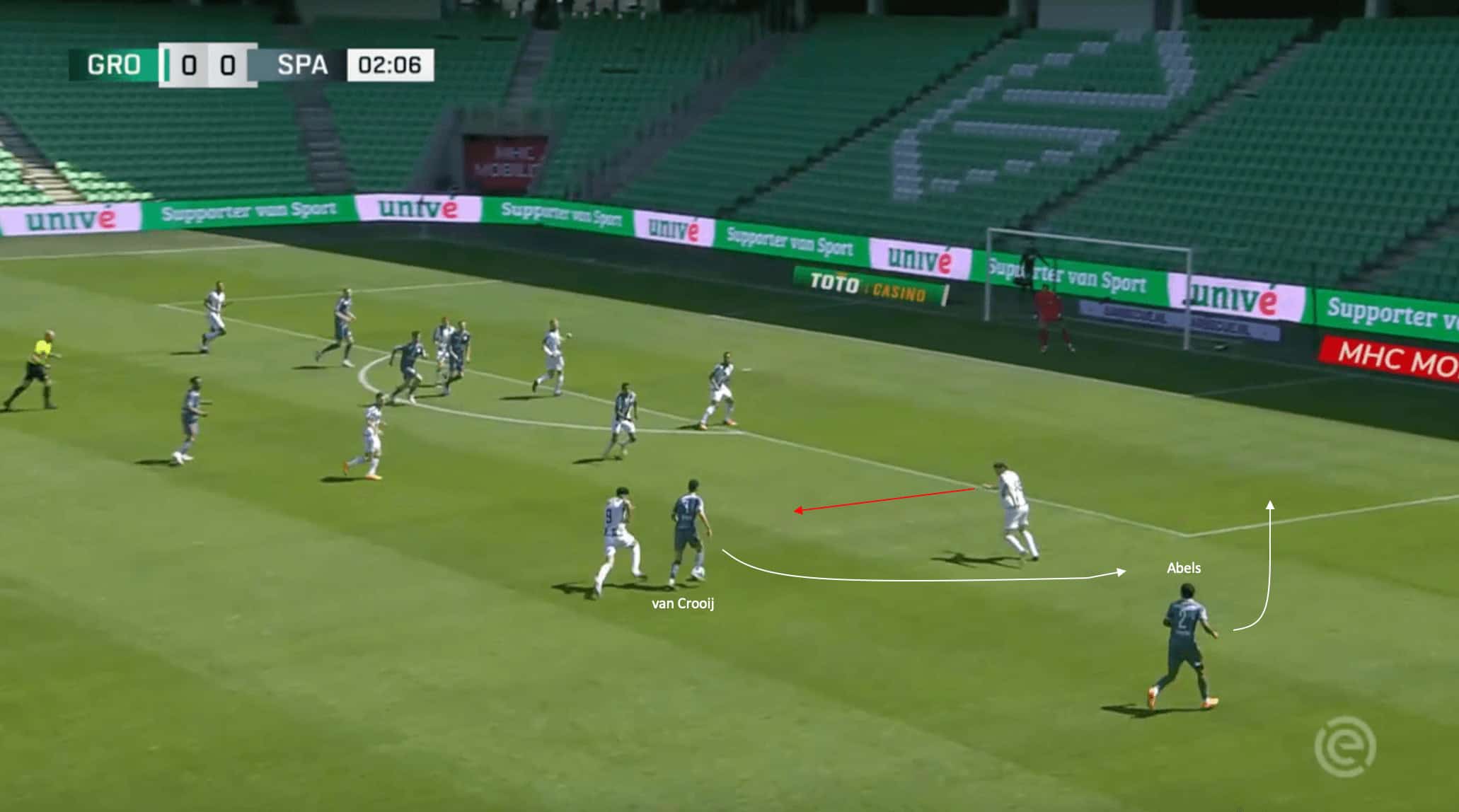
The image above shows another example of Sparta shifting the play wide to create an overload and send a dangerous ball into the box from this wide space.
In this attacking phase of play against Groningen, Vito van Crooij is in possession and able to drive at the Groningen fullback, with Dirk Abels making an overlapping run beyond the winger and into the space.
Due to Abels getting forward and joining the attack, it creates an overload against the opposition fullback, with the defender forced to decide whether or not to step out and engage van Crooij, or prevent the ball from being played to Abels.
In this instance, the fullback steps.
As a result, the Dutch winger shifts the ball into the feet of Abels, who drives past the fullback and into the penalty area before sending a dangerous ball across goal for the onrushing Sparta attackers to attempt to latch onto.
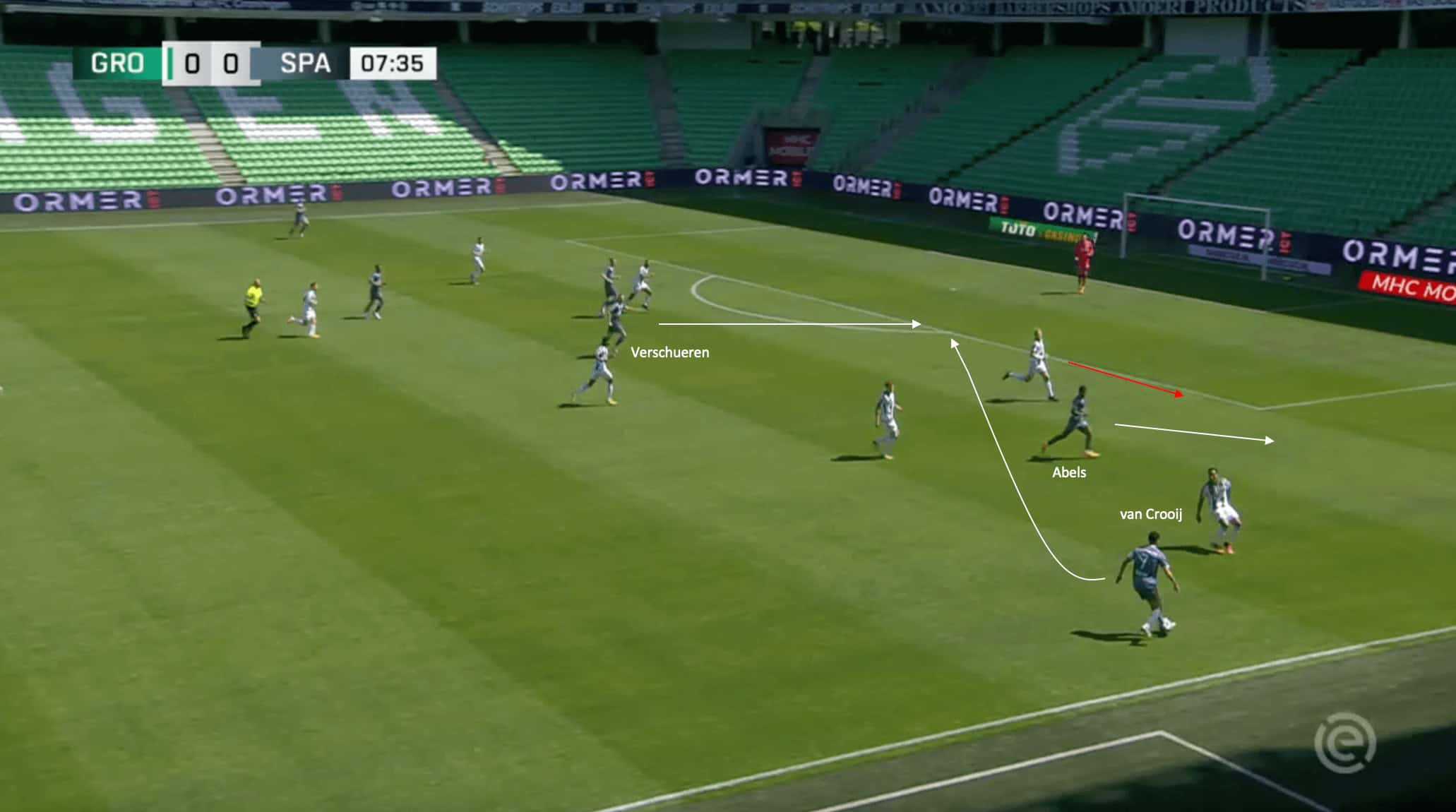
Under Maurice Steijn, Sparta Rotterdam were able to exploit the wide areas to create chances by creating overloads due to their off-the-ball overlapping and underlapping runs.
However, at times these runs would drag opposition defenders out of position, with them trying to defend against a potential overload.
This would allow runners from deep to make central runs and be options to receive the ball inside the penalty box.
In this phase of play above against Groningen, roles are slightly reversed, with van Crooij keeping the width, and fullback Dirk Abels making an underlapping diagonal run from a central position.
Sparta are looking to isolate the fullback and create an overload, with Abels looking to receive the ball behind the Groningen defence and scan for options inside the box.
However, the Groningen centre-back decides to slide over and track the run of Abels, negating the overload, but also vacating his defensive position.
This allows Arno Verschueren to make a run from deep into the vacated space, with the winger looking to find him.
While Maurice Steijn’s attacking tactics and principles mainly focus on utilising wide play to create chances and positional superiority, these runs are also able to create space centrally, which Steijn looks for his side to exploit as well when the opportunities arise, as this example showed.
Effective counter-pressing leads to solid defensive record
When it comes to putting pressure on the opposition when possession is turned over, Sparta Rotterdam were one of the more effective sides at counterpressing in the Eredivisie last season.
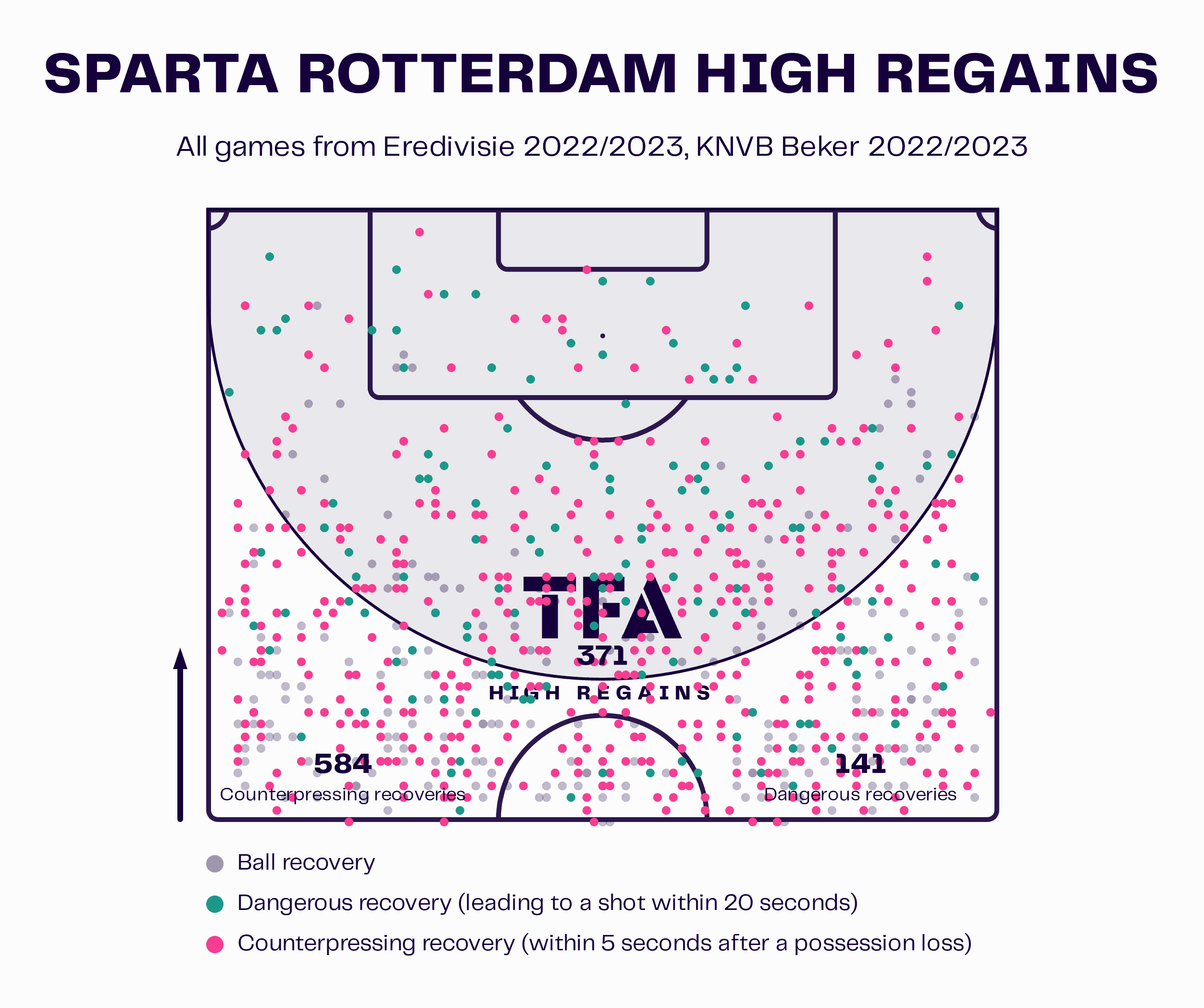
As this data viz graphic above shows, Sparta Rotterdam had 584 counterpressing recoveries in all competitions last season, a total that put them in the top half of all sides in the Eredivisie in this category.
However, as we can see from the graphic, most of these counterpressing recoveries from Sparta occurred around the middle third of the pitch, with Sparta not looking to commit too many numbers further forward and risk being exposed defensively.
This effective way of counterpressing essentially allowed Steijn to be able to keep a solid defence at the back and also still be dangerous in winning the ball back quickly in these moments when they turned over possession.
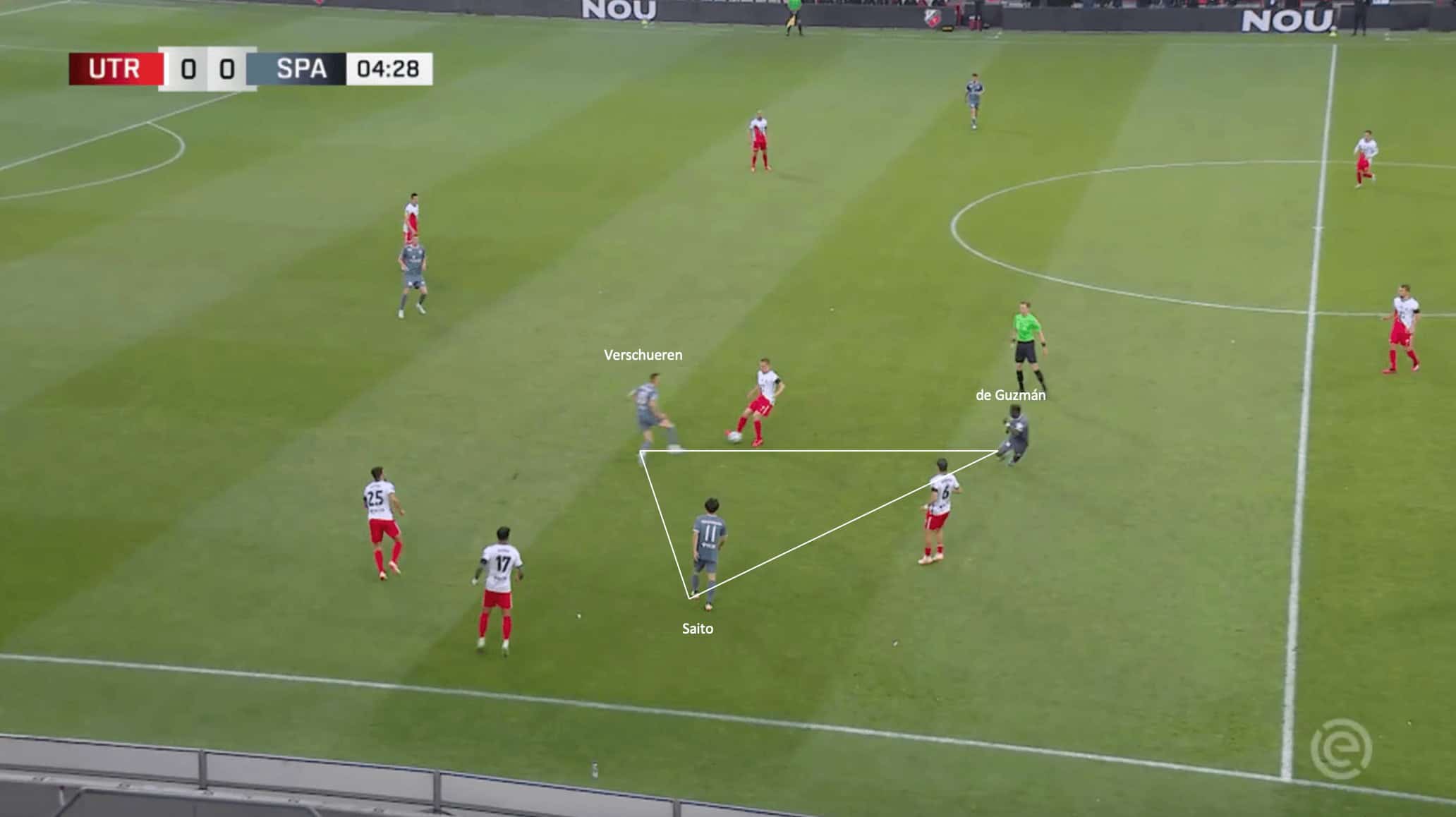
Similar to how Maurice Steijn’s Sparta Rotterdam side liked to attack, something similar is used when they counterpress.
As the image above shows, Sparta look to try and create a numerical superiority around the ball when they counterpress, which allows them a greater chance of quickly regaining possession after turning it over.
In this phase of play above from a match against Utrecht, Sparta are currently in a counterpressing moment.
After turning the ball over, Arno Verschueren and Koki Saito look to put pressure on the ball instantly, with defensive midfielder Jonathan de Guzmán also joining the pressing moment to create numerical superiority.
In this specific moment, however, the press from Sparta fails, with de Guzmán taking a bad angle and the furthest advanced player able to dribble past him after gaining possession.
This is when not committing many numbers forward in counterpressing moments helped Steijn’s side to also have one of the best defensive records in the Eredivisie last season.
As the Utrecht player drives into the Sparta half, the Rotterdam-based side still have numerical superiority, allowing them to successfully defend against this attack.
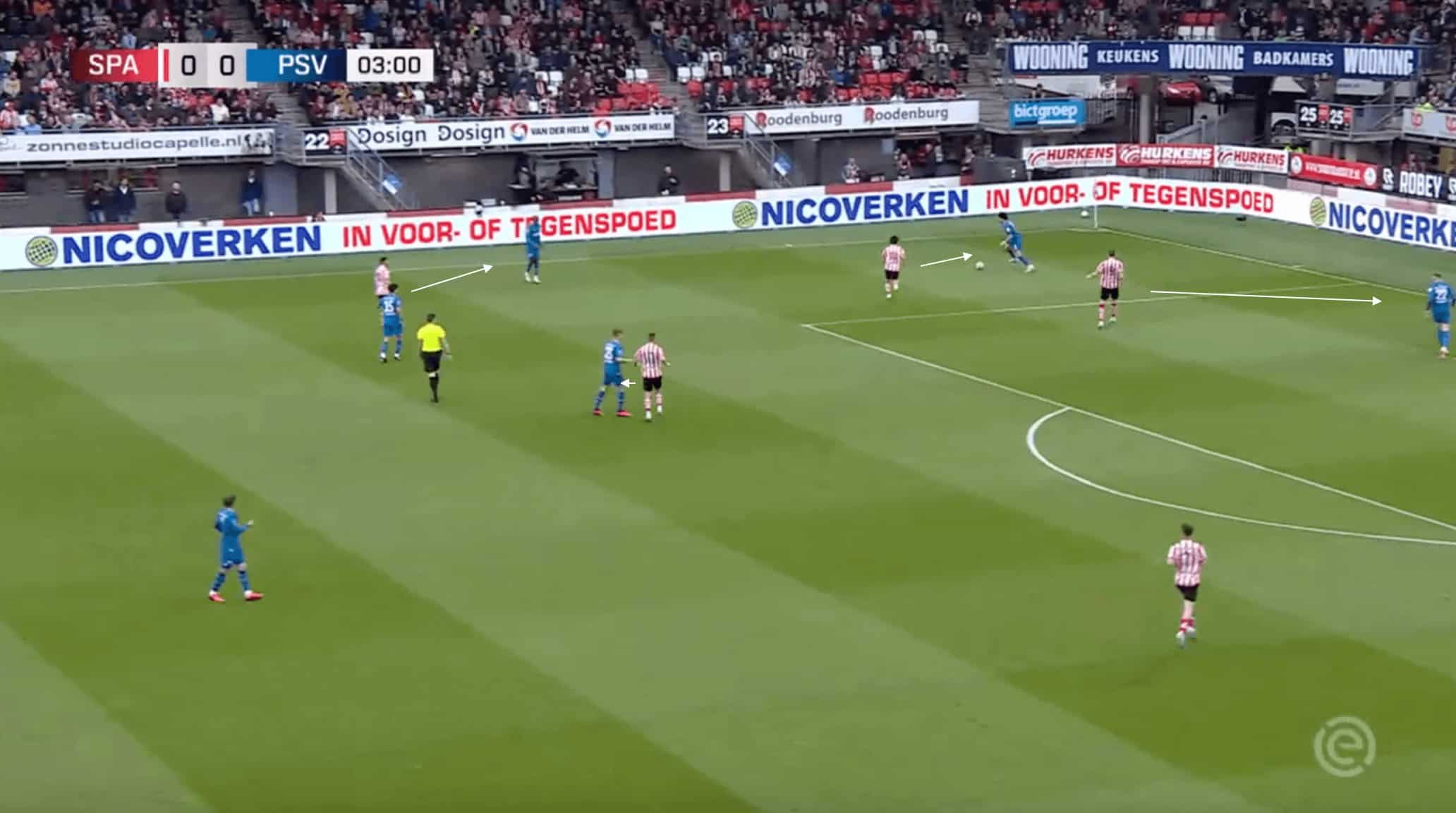
This final image shows another example of the Sparta Rotterdam counterpress, this time with them pushing up into more advanced positions to attempt to win back possession.
After turning over possession in an advanced area, the counterpress activates for Sparta, with the Dutch side going man-to-man on the PSV players, looking to force a turnover and regain possession in the attacking third.
In this phase of play, PSV decided to attempt to play over the top of the counterpress, with the ball being sent into the middle third area.
As a result, the Sparta defenders step up and are able to win the first ball in the air, before then regaining possession on the second ball phase.
As we mentioned earlier in this tactical analysis, Sparta finished last season with the highest number of defensive duels and aerial duels won in the Eredivisie.
What is similar about both of these counterpressing phases by Sparta is that they regain possession indirectly from the press, with them winning the ball off a defensive duel and then an aerial duel, highlighting how Maurice Steijn looks for his counterpressing tactics to play into his defensive strength.
Conclusion
As this tactical analysis and scout report has shown, Maurice Steijn was considered by many to be a surprise choice for Ajax and new director of football Sven Mislintat.
Ajax will be hoping that Steijn will repay their faith in him and bring the Dutch giants back to where they belong next season and, as this analysis has shown, the 49-year-old is very much capable of doing just that.





Comments